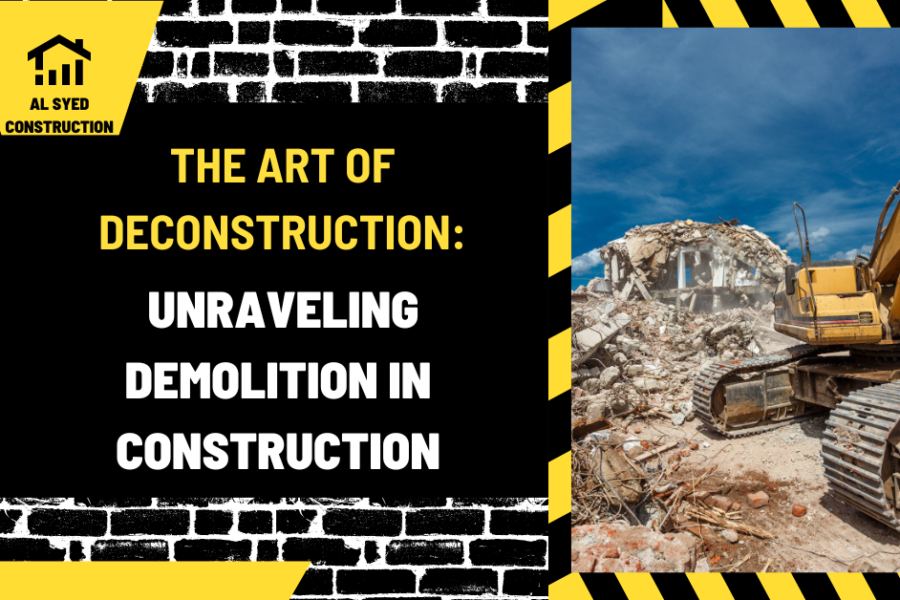The Art of Deconstruction: Unraveling Demolition in Construction
Demolition, a critical component of the construction industry, involves the systematic dismantling and removal of structures, buildings, or parts thereof. This process is not merely about destruction; it’s a carefully planned and executed operation that paves the way for new development and revitalization. This article explores the intricacies of demolition in construction, its methods, purposes, and the considerations involved in executing a demolition project.
Table of Contents
Understanding Demolition in Construction
Demolition is the process of tearing down existing structures to make way for new construction or to remove hazardous or obsolete buildings. It is a complex operation that requires detailed planning and expertise to ensure safety and efficiency. Demolition projects can range from small-scale residential teardowns to large commercial or industrial dismantling, each with its unique challenges and requirements.
Methods of Demolition
There are several methods of demolition, each suited to specific types of structures and project constraints. Mechanical demolition, the most common method, involves the use of heavy machinery such as excavators, bulldozers, and cranes to dismantle the structure. Implosion, a controlled demolition technique, uses explosives to collapse a building inward within seconds. Deconstruction, also known as selective demolition, is a more environmentally friendly approach that involves carefully dismantling a building to salvage and recycle materials.
Purposes of Demolition in Construction
Demolition serves various purposes in the construction industry. It is often the first step in redevelopment projects, clearing the site for new construction. Demolition is also employed to remove unsafe or structurally unsound buildings, ensuring public safety. Additionally, it plays a role in urban renewal and revitalization efforts, removing blighted structures to make way for modern development.
Considerations in Demolition Projects
Executing a demolition project requires careful consideration of several factors. Safety is paramount, with strict protocols in place to protect workers and the public from hazards such as falling debris, dust, and noise. Environmental considerations are also critical, with efforts to minimize the impact on surrounding areas and to recycle materials whenever possible. Legal and regulatory compliance, including obtaining necessary permits and adhering to local ordinances, is essential for a successful demolition.
Conclusion
Demolition in construction is a vital process that facilitates change and progress in the built environment. It is a specialized field that demands expertise, precision, and a commitment to safety and sustainability. Understanding the nuances of demolition is essential for construction professionals, as it enables them to navigate the complexities of deconstructing structures and laying the groundwork for future development.




